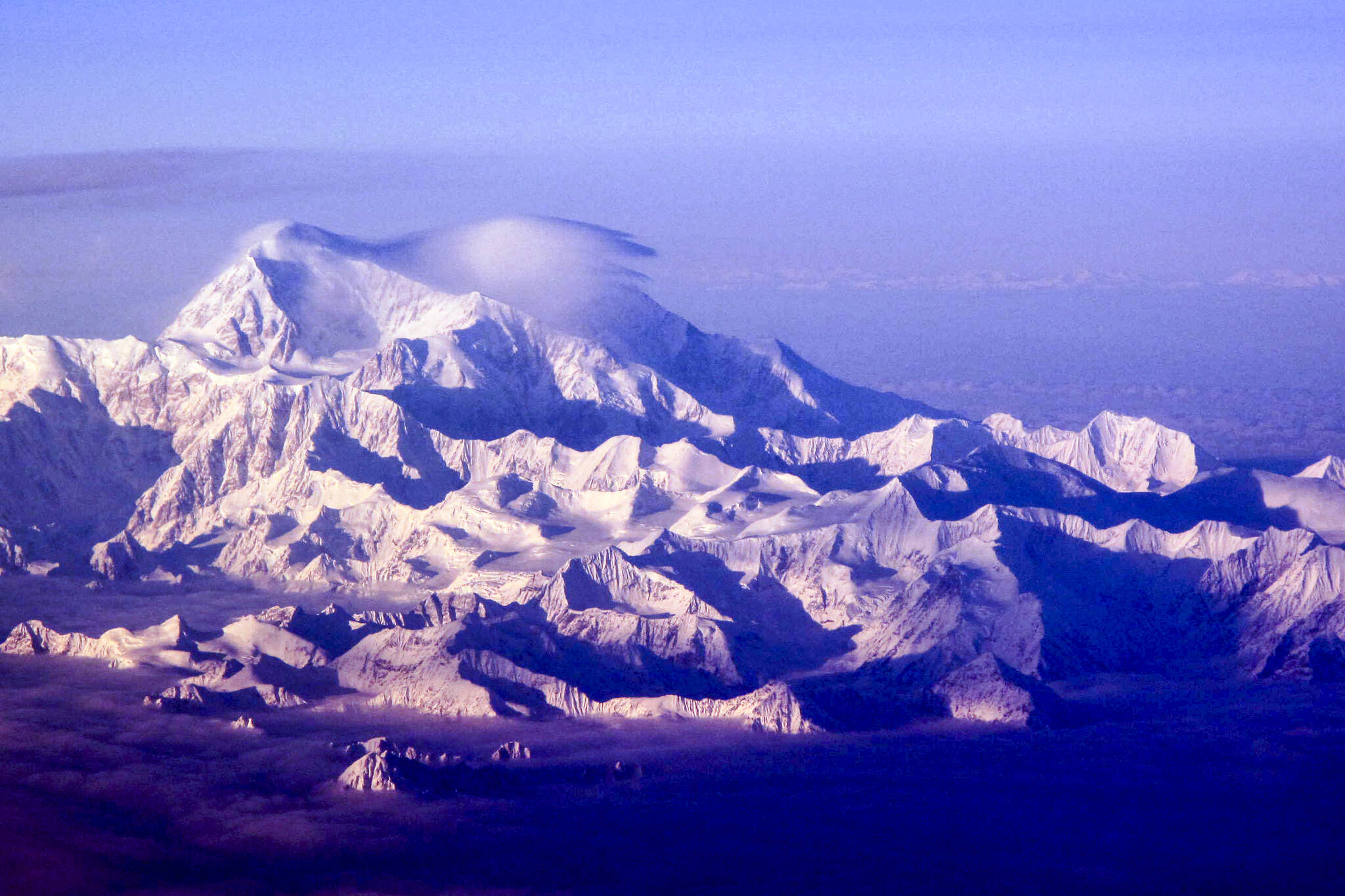Two college students will soon be stuffing snow from the slopes of Alaska’s highest mountain into Nalgene bottles. Their goal is to see if that precipitation contains tiny plastic particles that are ubiquitous everywhere else on Earth.
Matthew Crisafi-Lurtsema, 20, and Roger Jaramillo, 23, are both undergraduate engineering students at the University of Alaska Fairbanks. They are now spending their evenings sweating beneath weighted backpacks while thinking about the food they need to pack for a month of living on snow-capped Denali.
When their meals are all bagged up, the pair will fly from Talkeetna to Kahiltna Glacier on Denali on May 8. They will carry with them 32 bottles for sampling snow, new down bibs and jackets and Jaramillo’s ukulele.
They will collect snow samples at every 2,000 feet of elevation they gain in their attempt to summit the 20,310-foot peak. So they don’t have to carry the 500-milliliter sampling bottles the whole way, they will cache them where they can.
When they return from the mountain, they will analyze the melted snow in the lab of Alaska Pacific University’s Dee Barker, a chemist whose many interests include microplastics in our environment. Her lab includes equipment that will enable the climber-scientists to detect the presence and abundance of plastic fragments so small we can’t see them.
How common are microplastics, tiny particles shed from our vehicle tires and our synthetic clothing and our sandwich wrap and so many other things?
Scientists have found microplastics in every marine habitat in which they have looked, wrote researchers from the Ocean Conservancy. We inhale those particles and eat them along with our food and drink. Blue whales consume up to 10 million pieces of microplastic each day.
The whales — as well as we humans — get rid of most of that plastic, but 10 percent of what we eat remains with us. Researchers don’t know how much that harms us.
Jaramillo said he and Crisafi-Lurtsema’s goal is to find out more about microplastics — the ones wafting through the air and those left behind by Denali climbers who shed particles from petroleum-based gear and food containers.
“It’s not going to solve any problems, but it will give us a baseline of what the problem is,” Jaramillo said.
The Denali climb along the 17-mile West Buttress Route is a dream-come-true for Jaramillo, who grew up in Quito, Ecuador. He also spent time in New York City before getting accepted in UAF’s engineering program and travelling to Alaska last fall.
“It’s really crazy to think this is happening,” he said during a recent interview on the UAF campus. “It’s not even a year and I’m about to leave on a plane (for Kahiltna Glacier and the beginning of the climb at about 7,000 feet altitude). I’ve dreamt about this since I was a baby and watched movies about Denali.”
Jaramillo climbed many high peaks in Ecuador with his father. Those included Cotopaxi — a 19,347-foot volcano — when he was 12 years old.
Crisafi-Lurtsema grew up in Anchorage climbing in the Chugach Mountains. He also bagged many of Colorado’s 14,000-foot peaks when he was recently a student at the Colorado School of Mines. He and Jaramillo, who met in a UAF class, have spent many hours in the mountains preparing for their Denali climb. They have also huffed along on a Stairmaster at the UAF Student Rec Center while each wore a pack loaded with 85 pounds of iron weights.
Friends and family have helped the pair get ready for the trip. A fellow student bought them $120 worth of sour-gummy candy with his leftover dining money at UAF. They also received funds from Alaska Space Grant at UAF that enabled them to buy new gear and they got discounts on equipment from Beaver Sports, where Jaramillo works part-time.
As they pursue their goal of climbing the highest peak in North America, Jaramillo and Crisafi-Lurtsema have another mission, one that no climber has executed before — to find whether microplastics have reached the frozen roof of North America.
• Since the late 1970s, the University of Alaska Fairbanks’ Geophysical Institute has provided this column free in cooperation with the UAF research community. Ned Rozell ned.rozell@alaska.edu is a science writer for the Geophysical Institute.

